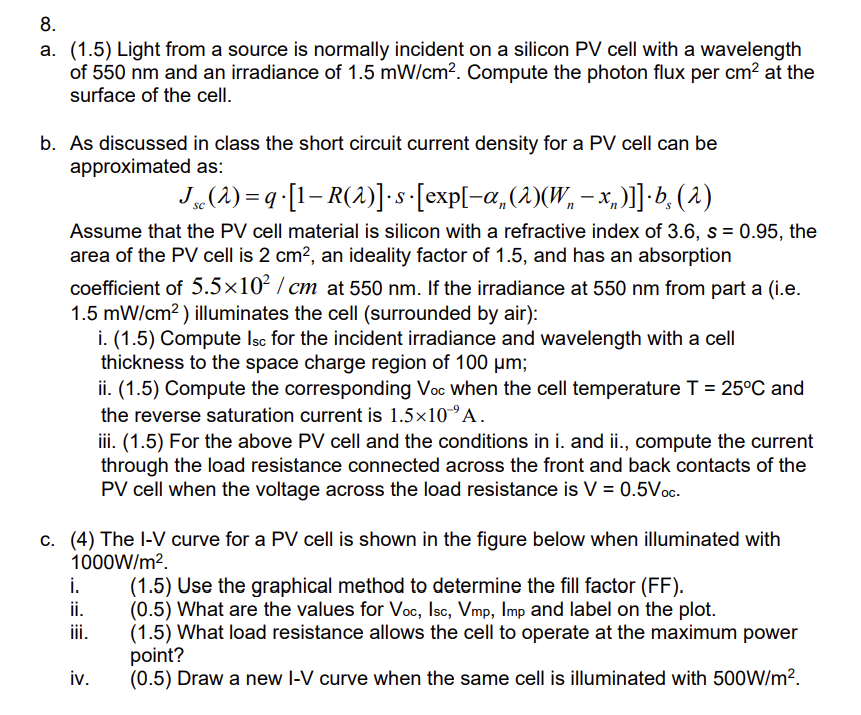Home /
Expert Answers /
Electrical Engineering /
a-1-5-light-from-a-source-is-normally-incident-on-a-silicon-pv-cell-with-a-wavelength-of-550n-pa559
(Solved): a. (1.5) Light from a source is normally incident on a silicon PV cell with a wavelength of 550n ...
a. (1.5) Light from a source is normally incident on a silicon PV cell with a wavelength of and an irradiance of . Compute the photon flux per at the surface of the cell. b. As discussed in class the short circuit current density for a PV cell can be approximated as: Assume that the PV cell material is silicon with a refractive index of , the area of the PV cell is , an ideality factor of , and has an absorption coefficient of at . If the irradiance at from part a (i.e. ) illuminates the cell (surrounded by air): i. (1.5) Compute for the incident irradiance and wavelength with a cell thickness to the space charge region of ; ii. (1.5) Compute the corresponding when the cell temperature and the reverse saturation current is . iii. (1.5) For the above PV cell and the conditions in i. and ii., compute the current through the load resistance connected across the front and back contacts of the cell when the voltage across the load resistance is . c. (4) The I-V curve for a PV cell is shown in the figure below when illuminated with i. (1.5) Use the graphical method to determine the fill factor (FF). ii. (0.5) What are the values for , Isc, and label on the plot. iii. (1.5) What load resistance allows the cell to operate at the maximum power point? iv. (0.5) Draw a new curve when the same cell is illuminated with .
